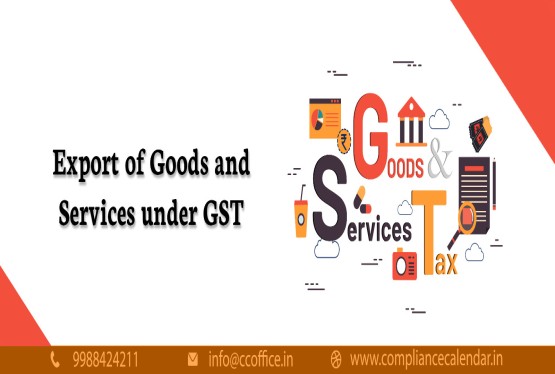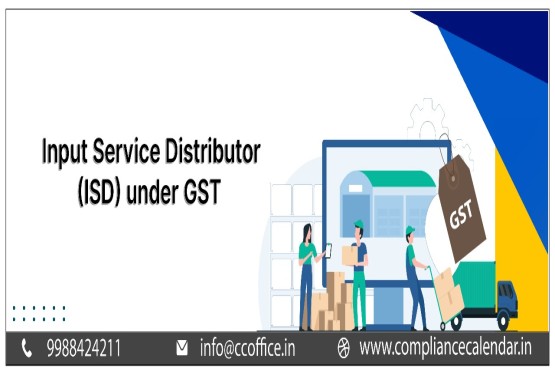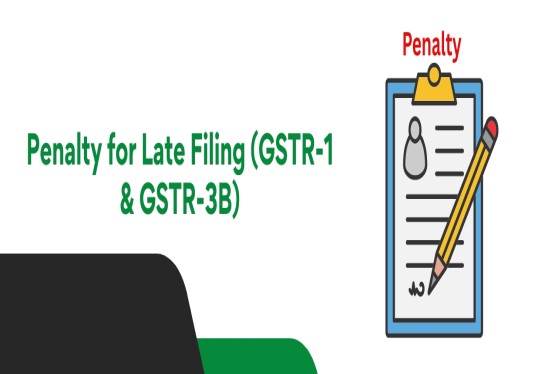The Indian tax sector is constantly evolving, with new provisions and amendments introduced to broaden the tax base, enhance compliance, and streamline tax collection. One such significant addition is Section 206CQ of the Income Tax Act, 1961, which was introduced in the Union Budget 2020. This section mandates the collection of Tax Deducted at Source (TDS) on the sale of goods exceeding a specified threshold, marking a notable expansion of the TDS regime. This article delves into the intricacies of Section 206CQ, exploring its applicability, provisions, impact on taxpayers, background, scope, TDS rate, reporting requirements, and overall implications.
Origin of Section 206CQ
Prior to the introduction of Section 206CQ, the TDS framework primarily focused on specific types of income such as salaries, interest, commissions, rent, and professional fees. Transactions involving the sale of goods, despite their significant economic value, largely remained outside the purview of TDS. This created potential avenues for tax evasion and made it challenging for the tax authorities to track and collect taxes on a substantial portion of commercial transactions.
Recognizing this gap and aiming to widen the tax net, the government introduced Section 206CQ. The underlying objective was to bring more high-value transactions under the TDS umbrella, thereby fostering greater transparency, improving tax compliance, and augmenting tax collections. By mandating TDS on the sale of goods above a certain limit, the government aimed to create a mechanism for upfront tax collection and reduce the potential for underreporting of income from such transactions.
Applicability of Section 206CQ of the Income Tax Act, 1961
The applicability of Section 206CQ hinges on specific criteria related to both the seller and the value of the goods sold.
1. Seller Criteria: Section 206CQ applies to every "seller" whose total sales, gross receipts, or turnover from their business exceeds INR 10 crores during the financial year immediately preceding the financial year in which the sale of goods is carried out. This threshold ensures that the provision primarily targets larger businesses with significant turnover. The definition of "seller" is broad and encompasses various entities, including individuals, Hindu Undivided Families (HUFs), firms, companies, Limited Liability Partnerships (LLPs), and other legal entities engaged in the sale of goods.
2. Transaction Criteria: The obligation to collect TDS under Section 206CQ arises only when the consideration received by the seller from a buyer for the sale of goods exceeds INR 50 lakhs in any previous year. This threshold is specific to each buyer. Therefore, even if a seller's total turnover exceeds INR 10 crores, they are only required to collect TDS from a particular buyer if the aggregate value of goods sold to that buyer in a previous year surpasses INR 50 lakhs.
3. Exclusions: It is crucial to note that Section 206CQ has certain exclusions. The provision does not apply to:
-
Sale of goods for export: Transactions involving the sale of goods that are ultimately exported outside India are exempt from the TDS requirement under this section.
-
Transactions where TDS is deductible under any other provision of the Income Tax Act: If a transaction involving the sale of goods is already subject to TDS under any other section of the Income Tax Act, then Section 206CQ will not apply to that specific transaction. This prevents the possibility of double taxation or multiple TDS deductions on the same transaction.
Unravelling the Provisions of Section 206CQ
Section 206CQ lays down specific responsibilities for the seller regarding the collection and remittance of TDS.
-
TDS Obligation: Every seller who meets the turnover criteria and receives consideration exceeding INR 50 lakhs from a buyer for the sale of goods in a previous year is mandated to collect TDS from the buyer.
-
TDS Rate: The rate at which TDS is to be collected under Section 206CQ is 0.1% of the sale consideration exceeding INR 50 lakhs. It's important to understand that the TDS is applicable only on the amount exceeding the threshold. For instance, if the sale consideration is INR 60 lakhs, the TDS will be calculated at 0.1% of INR 10 lakhs (INR 60 lakhs - INR 50 lakhs).
-
Time of Collection: The TDS is required to be collected by the seller at the time of receipt of the sale consideration or at the time of debiting the account of the buyer, whichever is earlier. This ensures that the TDS is accounted for at the earliest point when the transaction is recognized.
-
Deposit of TDS: Once the TDS is collected from the buyer, the seller is obligated to deposit the same to the credit of the Central Government within the prescribed time limits. These time limits are generally specified on a quarterly basis.
-
Furnishing of Form 26QD: The seller is also required to furnish a quarterly statement in Form 26QD. This form contains details of the transactions on which TDS has been collected, including the details of the buyer (name, address, PAN), the amount of sale consideration, and the amount of TDS collected. This statement must be filed within the prescribed time after the end of each quarter.
-
TDS Certificate (Form 16A): While not explicitly mentioned in the provided text, it's a standard TDS procedure that the seller (deductor) is also required to issue a TDS certificate in Form 16A to the buyer (deductee). This certificate evidences the amount of TDS deducted and deposited with the government, enabling the buyer to claim credit for the TDS against their income tax liability.
-
Buyer's Credit: The buyer from whom the TDS has been collected is entitled to claim credit for the TDS amount against their total income tax liability when filing their income tax return. This ensures that the TDS collected is not an additional tax but rather an advance tax payment.
Impact of Section 206CQ on Taxpayers
The introduction of Section 206CQ has had a multifaceted impact on various stakeholders, particularly sellers and small businesses.
Increased Compliance Burden for Sellers: The most immediate impact is the increased compliance burden on sellers who meet the specified turnover criteria. They are now responsible for:
-
Identifying transactions exceeding INR 50 lakhs with a single buyer in a previous year.
-
Collecting TDS at the rate of 0.1% on the amount exceeding the threshold.
-
Ensuring timely deposit of the collected TDS with the government.
-
Preparing and filing the quarterly statement in Form 26QD.
-
Issuing TDS certificates (Form 16A) to the buyers.
These additional responsibilities necessitate the implementation of robust accounting systems and processes to track sales, identify applicable transactions, and manage the TDS compliance requirements.
Potential Cash Flow Issues for Small Businesses: The provision can potentially lead to cash flow challenges, especially for small and medium-sized enterprises (SMEs). While the TDS rate of 0.1% might seem nominal, the actual amount deducted can be substantial in high-value transactions. This upfront deduction can impact the working capital of businesses, particularly those with tight liquidity. They might need to wait until the end of the financial year and the processing of their income tax returns to receive credit for the TDS.
Potential Increase in the Cost of Goods for Buyers: While the TDS is ultimately a credit against the buyer's tax liability, some sellers might attempt to pass on the administrative burden or the temporary cash flow impact of TDS by slightly increasing the price of their goods. This could potentially lead to a marginal increase in the cost of goods for buyers.
Enhanced Tax Compliance and Revenue Collection: From the government's perspective, Section 206CQ is expected to significantly enhance tax compliance and boost revenue collection. By bringing a large volume of sale transactions under the TDS net, it creates a trail of financial transactions, making it harder for businesses to underreport their income. The upfront collection of tax through TDS also ensures a more steady flow of revenue for the government.
Increased Scrutiny and Documentation: The implementation of Section 206CQ necessitates more meticulous record-keeping and documentation of sales transactions, particularly those exceeding the specified threshold. Both buyers and sellers need to maintain proper records to reconcile the TDS amounts and claim appropriate credits.
Scope of Section 206CQ
The scope of Section 206CQ is broad, encompassing the sale of all types of "goods." The term "goods" is generally understood in its common parlance and includes movable property, but excludes actionable claims, money, securities, and electricity. This wide definition ensures that a significant range of commercial transactions falls under the ambit of this provision.
As reiterated earlier, the applicability is contingent on the seller's turnover in the preceding financial year exceeding INR 10 crores and the aggregate value of sales to a specific buyer in a previous year exceeding INR 50 lakhs. The exclusions for export sales and transactions already subject to TDS under other provisions are crucial in defining the precise boundaries of this section.
TDS Rate under Section 206CQ
The prescribed TDS rate under Section 206CQ is a modest 0.1% of the sale consideration exceeding INR 50 lakhs. This relatively low rate was perhaps chosen to minimize the immediate cash flow impact on businesses while still ensuring a broad coverage of high-value transactions.
It is imperative for sellers to accurately calculate the TDS amount. The TDS is applicable only on the portion of the sale consideration that exceeds the INR 50 lakhs threshold for a specific buyer in a given previous year.
Form 26QD under Section 206CQ
Form 26QD is the quarterly statement that sellers liable to collect TDS under Section 206CQ are required to furnish. This form serves as a crucial reporting mechanism for the tax authorities. It mandates the disclosure of comprehensive details related to the TDS transactions, including:
-
The seller's details (name, address, PAN).
-
The buyer's details (name, address, PAN).
-
The amount of sale consideration.
-
The date of the transaction.
-
The amount of TDS collected.
-
The date of TDS deposit.
The timely and accurate filing of Form 26QD is essential for compliance with Section 206CQ. Failure to do so can attract penalties under the Income Tax Act.
Conclusion
Section 206CQ represents a significant step towards broadening the tax base and enhancing tax compliance in India. While it brings more transactions under the TDS net, it also imposes additional responsibilities on sellers, particularly those with substantial turnover. Businesses need to adapt their accounting and operational processes to effectively manage the requirements of this section.
For sellers, understanding the applicability criteria, the TDS rate, the timing of collection and deposit, and the reporting obligations through Form 26QD is paramount. They need to ensure they have the necessary systems in place to track sales to individual buyers and comply with the TDS provisions. For buyers, while the TDS acts as a credit against their tax liability, they need to ensure they receive the TDS certificates (Form 16A) from the sellers and accurately reflect the TDS amounts in their income tax returns.
Frequently Asked Questions (FAQs)
Q1. What is Section 206CQ of the Income Tax Act?
Ans. Section 206CQ is a newly introduced provision under the Income Tax Act, 1961, which mandates the deduction of TDS on the sale of goods exceeding Rs.50 lakhs. It applies to sellers whose total turnover, sales, or gross receipts exceeded Rs.10 crores in the financial year preceding the year of the transaction.
Q2. Who is responsible for deducting TDS under Section 206CQ?
Ans. The responsibility to deduct TDS lies with the seller. This includes all categories of sellers—individuals, HUFs, firms, companies, LLPs, etc.—provided their turnover exceeded Rs.10 crores in the previous financial year.
Q3. What is the applicable TDS rate under Section 206CQ?
Ans. TDS must be deducted at the rate of 0.1% on the portion of the sale consideration that exceeds Rs.50 lakhs. The seller must collect and deposit this amount with the government within the specified timeframe.
Q4. Are there any exemptions under Section 206CQ?
Ans. Yes, TDS under this section is not applicable in the case of export of goods or where TDS is already required under any other provision of the Income Tax Act.
Q5. What is Form 26QD in relation to Section 206CQ?
Ans. Form 26QD is a quarterly return that the seller must file, detailing the transactions and TDS collected during the quarter. It includes information such as the buyer’s details, transaction amount, and TDS deducted.
Q6. What are the penalties for not complying with Section 206CQ?
Ans. Failure to comply may lead to a penalty of Rs.200 per day of default. In addition, interest at 1.5% per month or part thereof may be charged for delays in depositing the TDS.









_crop10_thumb.jpg)


















































































_for_FY_2025-26_crop10_thumb.jpg)












_learn_crop10_thumb.jpg)








_Filing_Due_Dates_for_FY_2024-25_learn_crop10_thumb.jpeg)



































